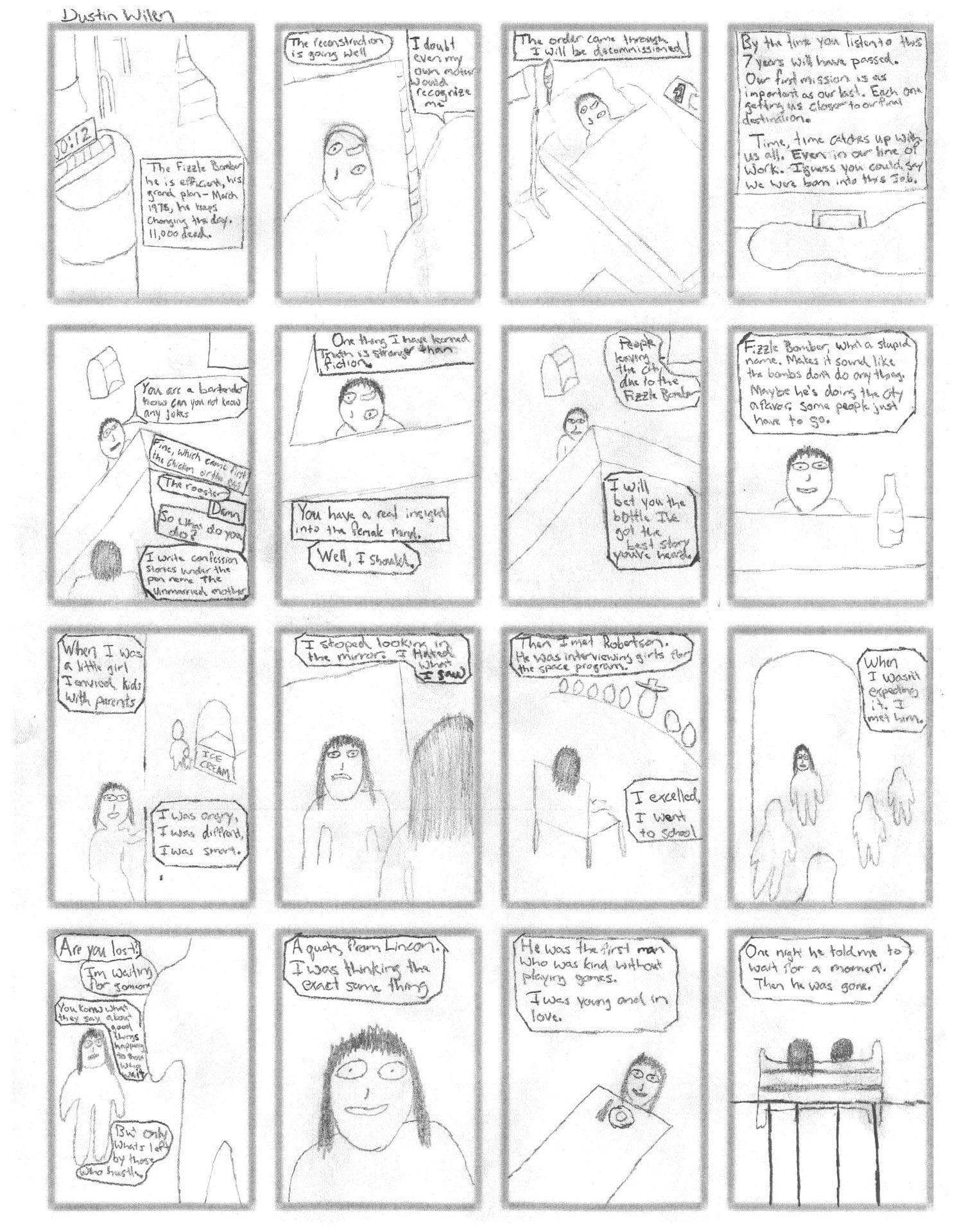
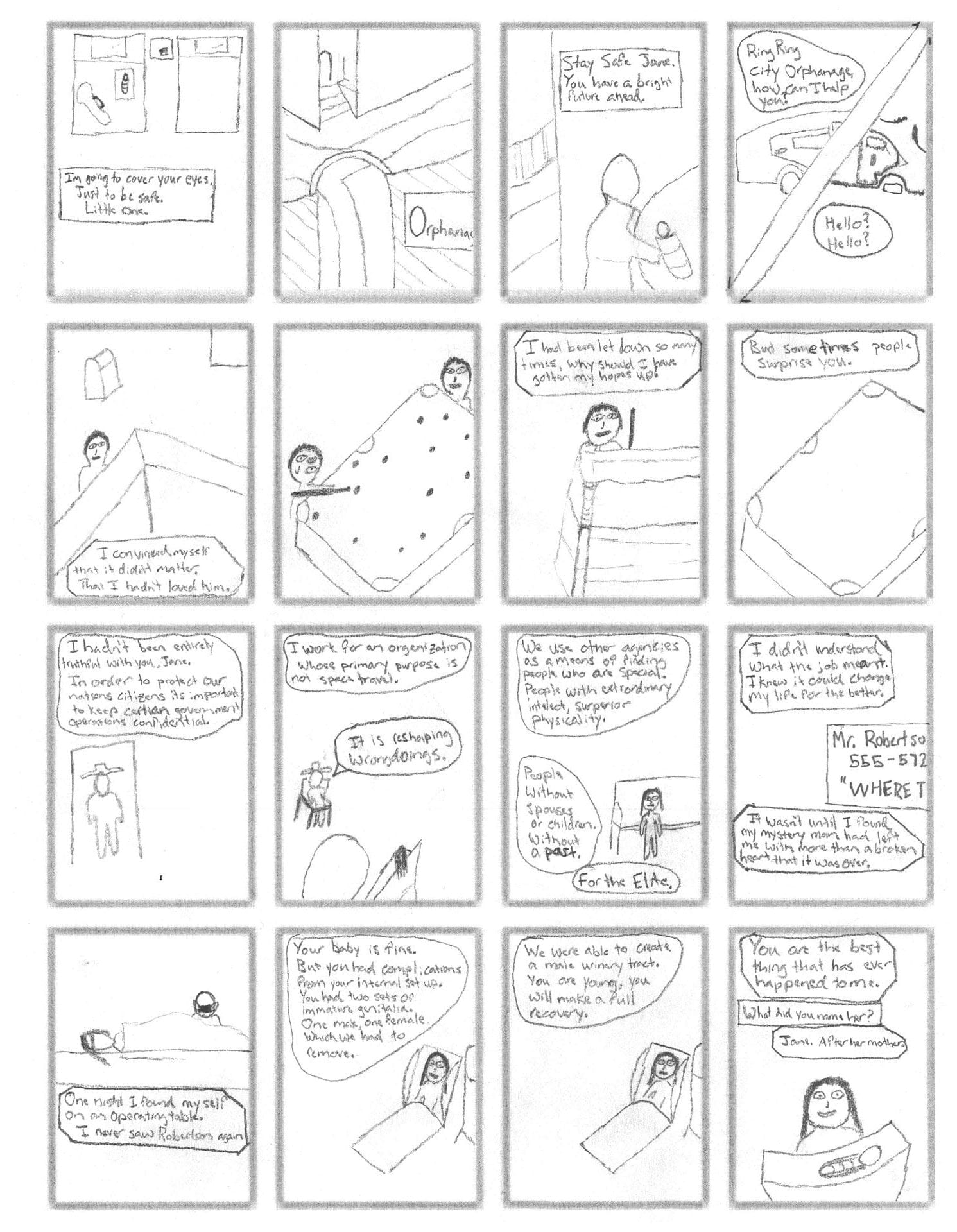
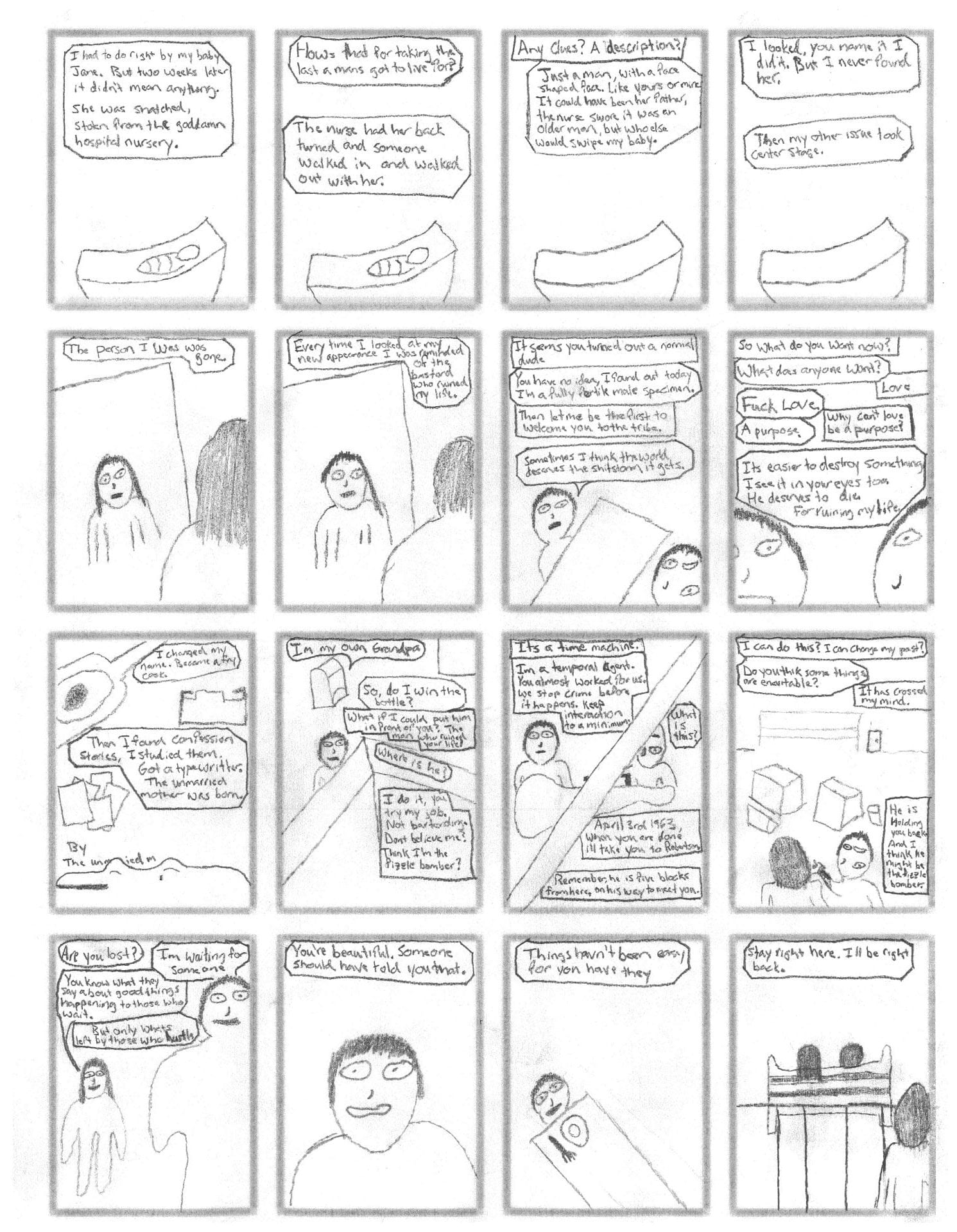
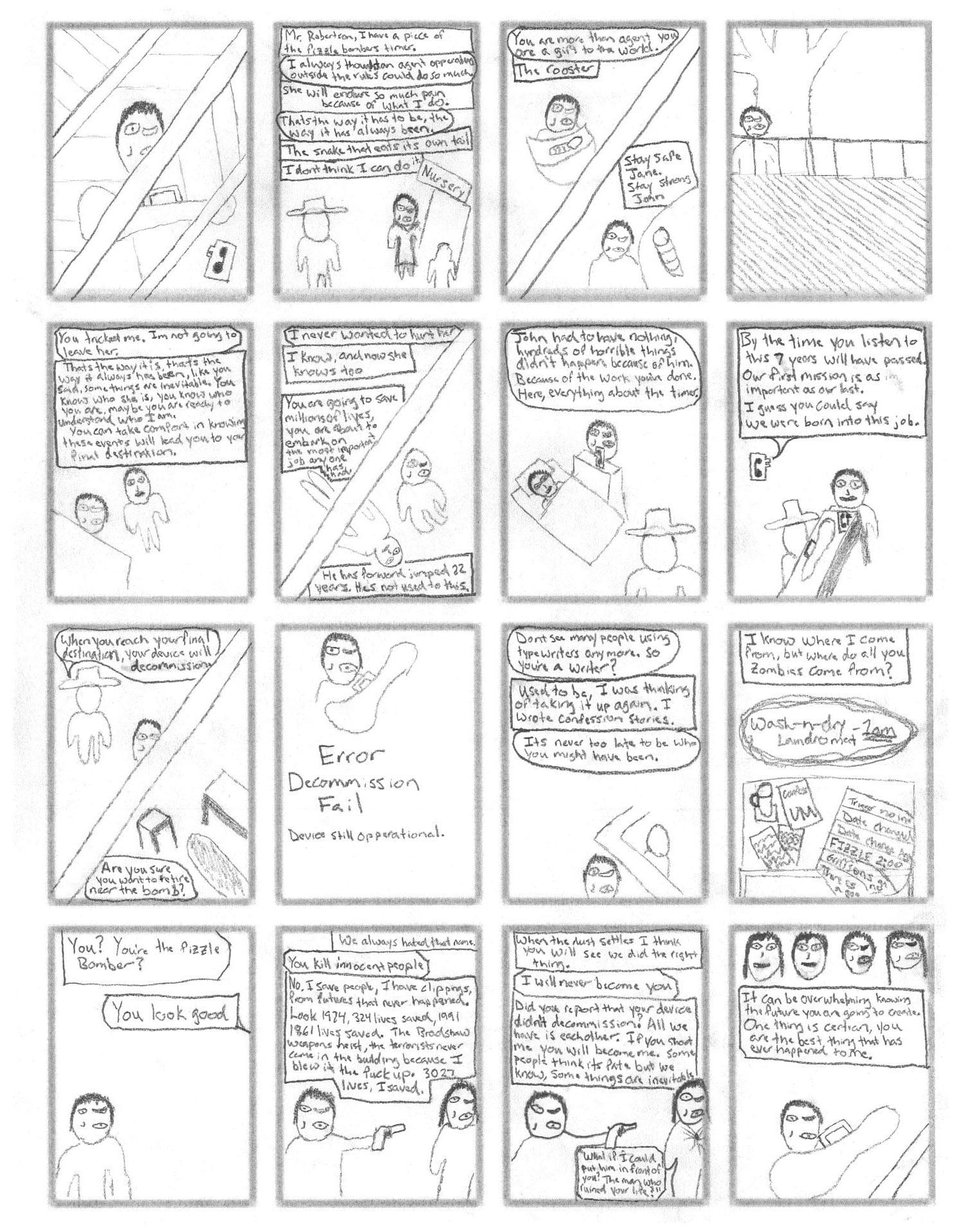
Artist Statement
My comic is a 64-frame interpretation of Predestination (2014), a film based on Robert Heinlein’s 1959 short story “ ‘–All You Zombies–’ ”. Both the book and the film examine repercussions related to time travel, but they are constrained by the underlying linearity of each medium.
In Understanding Comics, McCloud presents a large grid of panels that can be read in different directions. Because narratives tend to be linear, comics rarely take advantage of this feature. However, some works, especially those involving time travel, have stories that do not fit that linear structure. Because full-page comics can have multiple readable axes, an artist can use
the unique power of the panel-designed pages to overcome the confining linearity of other media. In Predestination, I saw an opportunity for comics to portray its nonlinear story in a form that emphasizes time travel’s unique temporality.
The Perfect Story
Predestination features a character interacting with different iterations of themself throughout time. The protagonist(s) exist within a closed time loop and become responsible for their own existence. At its core, the story is about the incredibly complex relationship that the main character has with their past and future selves. In my comic, I wanted to make sure that this relationship was not overshadowed by the narrative’s mind-bending events.
Using Comics to Accomplish My Goal
My rendering was based on the concept that readers’ experiences are enhanced by themulti-directional nature of comics. Following the standard practice of page-by-page progression results in one narrative reading, but horizontal readings result in additional threads. For my comic, I used the standard reading to trace the film’s narrative; each row of my sixteen-panel
grid focuses on a particular story thread, highlighting the relationships between scenes in disparate times. I chose the waffle iron grid spanning four pages because it gave me sixteen panels per page and sixteen panels per row. This format provided a four-row, cross-page matched up with the character’s four most important iterations. (See illustration below)
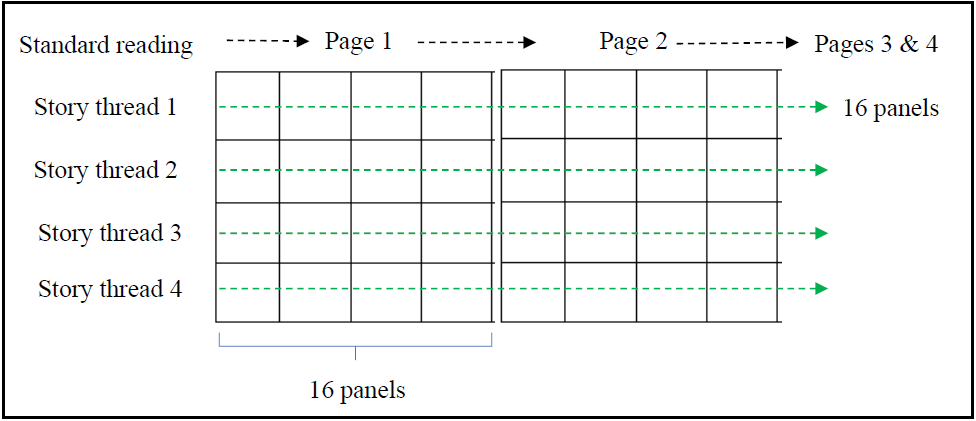
The standard reading following the linear plot from the film cuts from character to character and from time period to time period. (To distinguish between them, I refer to the character iterations as Jane, John, Bartender, and Fizzle Bomber.)
The first cross-page row tracks the protagonist’s missions as part of the Temporal Agency, examining the themes of how time travel (depicted using a diagonal gutter) can change events. The second row concentrates on the relationship between John and the Bartender and John’s recruitment to the Temporal Agency. The third row centers on Jane’s transition to Standard reading to becoming John and her associated pain and suffering. The fourth row pursues the relationship between Jane and John.
The fourth row’s series of panels exemplify how multidimensional constructions can underscore thematic elements. The confrontation between the Bartender and the Fizzle Bomber is the culmination of the Jane / John relationship, a fact that is not immediately evident at first glance. The film appears to portray the Bartender as being disgusted with the Fizzle Bomber’s methods as the impetus for his decision to kill the bomber. But putting the scene in sequence with their previous relationship, as I did, highlights that emotion as the continuation of Jane’s hatred for the man who ruined her life. Similarly, the rows on the fourth page serve as the culmination of another thread and showcase one of the underlying narrative themes – that by ensuring their own existence, the protagonist(s) continually injure different iterations of themselves. John leaves Jane, the Bartender steals Jane’s baby, the Bartender kills the Fizzle Bomber, and the Fizzle Bomber drives the Bartender to insanity.
My iconic characters convey Predestination’s major story elements, and although I wish my rendering was more consistent, I believe I accomplished my goal. The story’s twisting temporal narrative required packing dense dialog into small panels, resulting in some abrupt transition moments from one line to the next. (I tried to pack an eight-thousand-word script full
of essential conversations into a four-page comic.) Despite my artistic struggles, I’m very proud of the final product; it faithfully portrays an incredibly complex narrative and uses the multidimensional nature of comics to push the art form’s full capabilities. My presentation shows
the comic medium’s power by juxtaposing panels to highlight the consequences of every action in this twisted examination of the snake that eats its own tail.
©2020 Dustin Wilen
